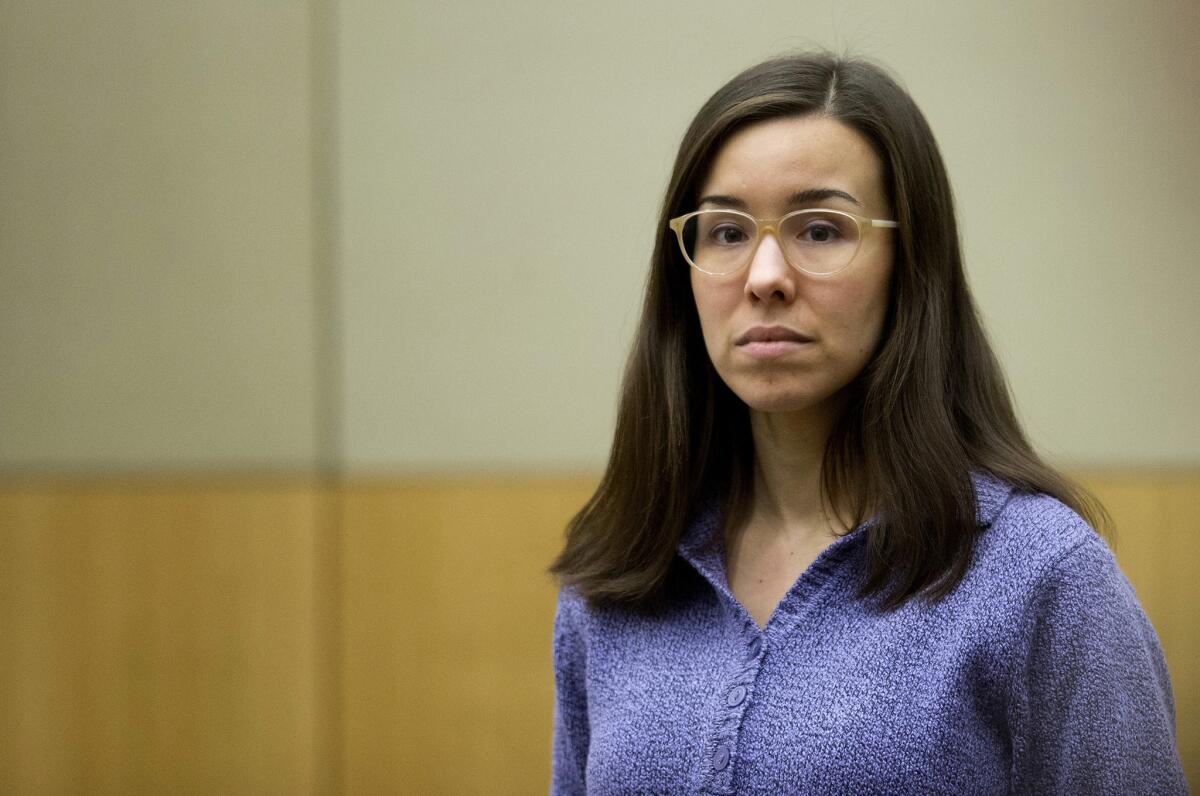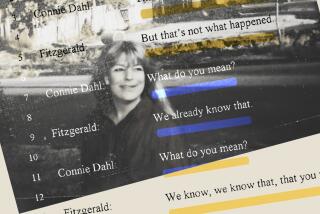How the Jodi Arias case inflamed passions, yet stymied two juries

This much is clear: Jodi Arias killed her former boyfriend, Travis Alexander, in 2008. She admitted it after two years of obfuscation, claiming self-defense. Prosecutors convinced jurors in 2013 that the slaying was premeditated, and Arias was convicted of first-degree murder.
But when it came to deciding her punishment, two separate juries could not agree that her crime met Arizona’s standard for imposing the death penalty: a murder that is cruel, heinous or depraved.
Evidence showed that Alexander was stabbed 29 times and shot in the forehead. His throat was slashed so severely that he was nearly decapitated.
During an interview with CBS’ “Inside Edition” in 2008, Arias – who at the time denied any role in the slaying – called the crime “heinous.”
“I can’t imagine slitting anyone’s throat,” she said then.
It was that directness, those blanket assertions of innocence in the face of what appeared to be contradictory facts, that riled thousands of people online and on cable TV into painting diametrically opposite portraits of Arias.
Two years later, when Arias said she had killed Alexander, she said she had been defending herself from his abuse.
Was she a scheming seductress who coldly plotted her former boyfriend’s murder? Or a tormented victim who had finally had enough?
Arias maintained through both her trials that Alexander was controlling and had abused her physically and emotionally. To support her allegation, Arias’ defense team played a recording of a call involving phone sex between the two.
Arias’ trials were marked by contrasting images. Photos of Arias from her youth were shown to jurors, along with lurid nude photos that Arias and Alexander had taken of themselves. The blond, grinning Arias depicted in pretrial selfies stood in sharp contrast to the severe, bespectacled brunette who appeared in court.
Why the case captivated attention is less clear. Neither the victim nor the defendant were famous, which is usually a crucial ingredient for celebrated trials. But the Arias case fed on itself. She became famous because of the crime, and therefore a celebrity was on trial.
Arias and Alexander made an attractive couple, and they were Mormon. In fact, she had converted to his religion. And the brutality of the crime made it natural tabloid fodder. “A twisted tale of love turned deadly,” as an ABC host put it.
Many strangers who never met Alexander demanded justice for his death. Hashtags including “#J4T,” or Justice for Travis, made the rounds during Arias’ criminal and penalty phase trials.
After the second jury failed to agree on Arias’ sentence Thursday, despite more than 26 hours of deliberation over several days and a special jury instruction from the judge to try to resolve the impasse, Alexander’s family said the outcome saddened them. In a statement issued through their attorney, the family said, “However, they understand the difficulty of the decision, and have nothing but respect for the jury’s time.”
Maricopa County Atty. Bill Montgomery bemoaned the attention the trial received and the way people took sides for and against Arias.
“Our criminal justice system is not a game, it’s not a sporting event,” he said.
At a news conference after the trial, jurors said they had deadlocked on the death penalty, with 11 in favor. The lone holdout, a woman who did not attend the news conference, refused to deliberate, some jurors said. The foreman said jurors had asked the judge to remove her earlier this week, but the judge had refused.
None of the 11 jurors nor the two alternates who spoke with the news media identified themselves.
The holdout juror “alluded that the death penalty would be a form of revenge,” a male juror said. That was upsetting, he said. “There are lots of us on the jury whose religions don’t support capital punishment. We had to overcome that.”
The juror “didn’t deliberate with us,” a juror said. Another said the holdout juror “shut down,” despite the fact that the other jurors allowed her to choose what elements of the trial she would look into: The juror chose to start with Arias’ journals.
Jurors complained that the holdout had seen a Lifetime movie depicting Arias’ story, and it had affected her decision.
Several members of the eight-woman, four-man jury were pointed in their assessment of what happened.
“We feel like we failed,” one female juror said.
Under Arizona law, there will be no third jury. Now, Maricopa County Superior Court Judge Sherry Stephens will sentence Arias either to spend the rest of her life in prison or will make her eligible for parole after 25 years. Sentencing is set for April 13.
More to Read
Sign up for Essential California
The most important California stories and recommendations in your inbox every morning.
You may occasionally receive promotional content from the Los Angeles Times.











